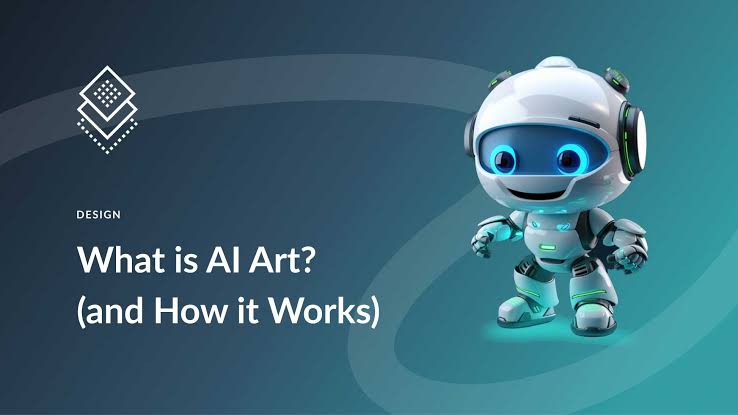The role of AI in art and design for social change is still evolving, but its impact is already being felt across disciplines and communities. As artists and designers continue to experiment with machine intelligence, they are reshaping what it means to create with purpose.
Artificial intelligence is no longer confined to the world of data analytics, automation, or scientific modeling. In recent years, it has emerged as a powerful force in creative spaces—fueling art, design, music, and storytelling in new and provocative ways. One of the most compelling developments is how AI is being used not just for aesthetic creation, but for activism, awareness, and social transformation.
As AI tools become more accessible and intuitive, artists and designers are using them to amplify underrepresented voices, visualize complex social issues, and engage communities in meaningful conversations. The result is a growing movement where human creativity and machine intelligence intersect to advocate for justice, equity, and empathy.
A new canvas for creativity
AI offers artists a unique set of tools that extend their creative capacity. From image generation and style transfer to natural language processing and generative design, these technologies can produce results that are often surprising, abstract, or emotionally resonant. But beyond novelty, AI gives creators the ability to engage with themes of climate change, racial inequality, gender identity, poverty, and other urgent societal concerns in innovative ways.
Artists can now train models on historical archives, protest footage, and cultural artifacts to generate new visual narratives that speak to injustice or resilience. Designers can simulate future cityscapes affected by rising sea levels or visualize global refugee movements through AI-enhanced maps and storytelling platforms. These capabilities allow creators to explore not only what is, but what could be—and what should be.
AI as a mirror of society
AI-driven art has the potential to reflect social issues back at society with greater clarity. For instance, artists have used AI models trained on biased datasets to reveal the systemic prejudice encoded in facial recognition technology. Others have created installations that show how AI categorizes people based on race, gender, or income—forcing audiences to confront the inherent biases of the systems we build.
In this way, AI becomes a medium for critique. It can be used not just to create beauty, but to provoke discomfort, question assumptions, and generate dialogue. By exposing flaws in both technology and culture, AI-assisted art can play a crucial role in education and awareness.
Collaborative storytelling and empathy-building
AI has also opened up new possibilities for participatory design and collective storytelling. Community members can work alongside designers and developers to feed local histories, experiences, and languages into generative models that then produce art or data visualizations reflecting their unique perspectives. This approach empowers marginalized communities to tell their own stories, often in formats that would have been inaccessible to them without technical support.
For example, some projects have used AI to turn oral histories from Indigenous communities into animated sequences or soundscapes. Others have transformed interviews with immigrants into immersive digital experiences that help broader audiences empathize with the migrant journey. In these cases, AI serves as a bridge—connecting people across divides through shared narrative experiences.
Reimagining activism through interactive design
Designers are using AI to reimagine activism by making it more interactive, personal, and data-driven. Campaigns powered by machine learning can adapt messages in real-time to different audiences, optimize impact, and even predict where engagement is most needed. Augmented reality and AI-generated environments allow activists to simulate real-world crises, such as deforestation or urban homelessness, in public spaces—encouraging people to interact, learn, and take action.
This new wave of activism is not about static posters or performances; it's about dynamic, evolving conversations shaped by both human and machine input. Whether it's an AI chatbot that educates users about mental health stigma or a generative design campaign that responds to real-time climate data, AI is helping transform activism from something you observe into something you experience.
The ethics of AI-driven creativity
While the potential of AI in art and design for social change is immense, it also raises significant ethical questions. Who owns the data that fuels creative projects? Can an algorithm trained on biased or incomplete information unintentionally perpetuate harm? What responsibilities do artists and designers have when working with machine-generated outputs?
Transparency, consent, and inclusivity must be central to any AI-powered creative process. Artists should be clear about how their models are trained, who contributes to the dataset, and how audiences interact with the final work. Without these considerations, the same tools meant to empower can reinforce the very inequalities they aim to challenge.
AI, design, and the future of inclusion
Despite the challenges, AI holds tremendous promise in making art and design more inclusive. Accessibility tools powered by AI—like real-time captioning, automated translation, and adaptive interfaces—are helping more people engage with creative content. AI is also enabling neurodivergent and disabled artists to experiment with new forms of expression that suit their specific needs and strengths.
In design education and practice, AI is being used to uncover design biases, simulate inclusive environments, and develop ethical frameworks that put human dignity at the center. This isn’t just about new technology—it’s about rethinking the entire design process to be more democratic, more conscious, and more future-ready.
